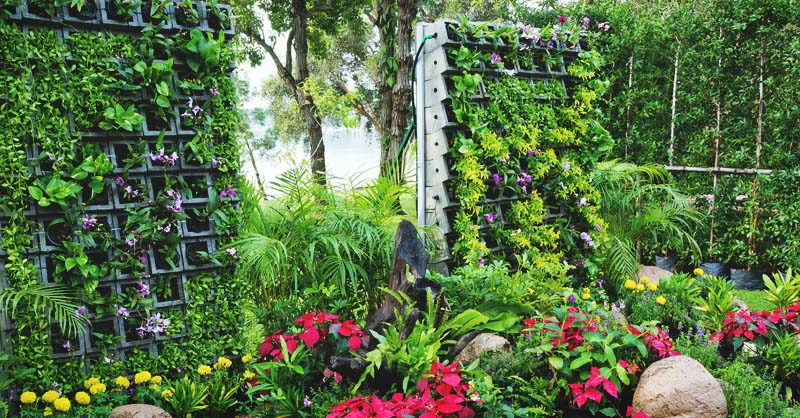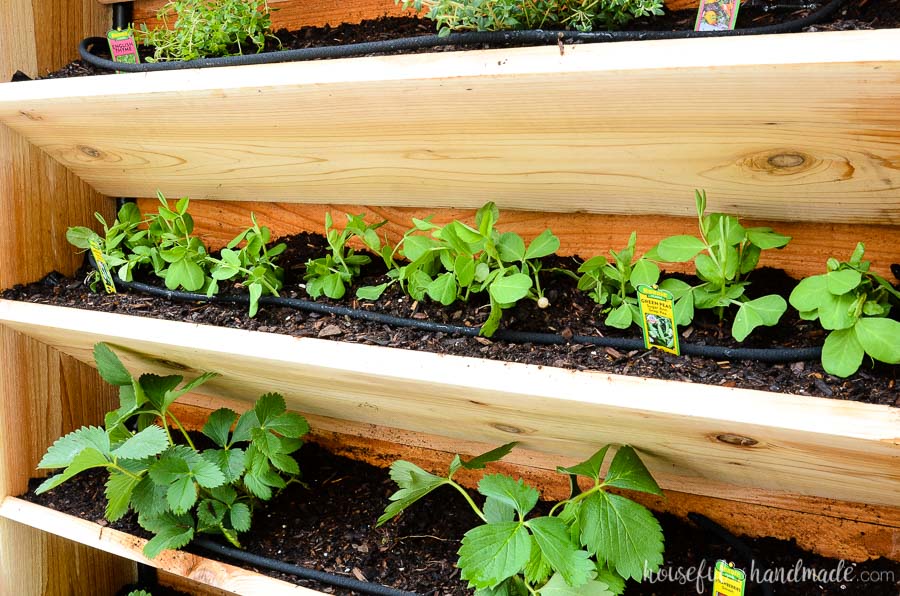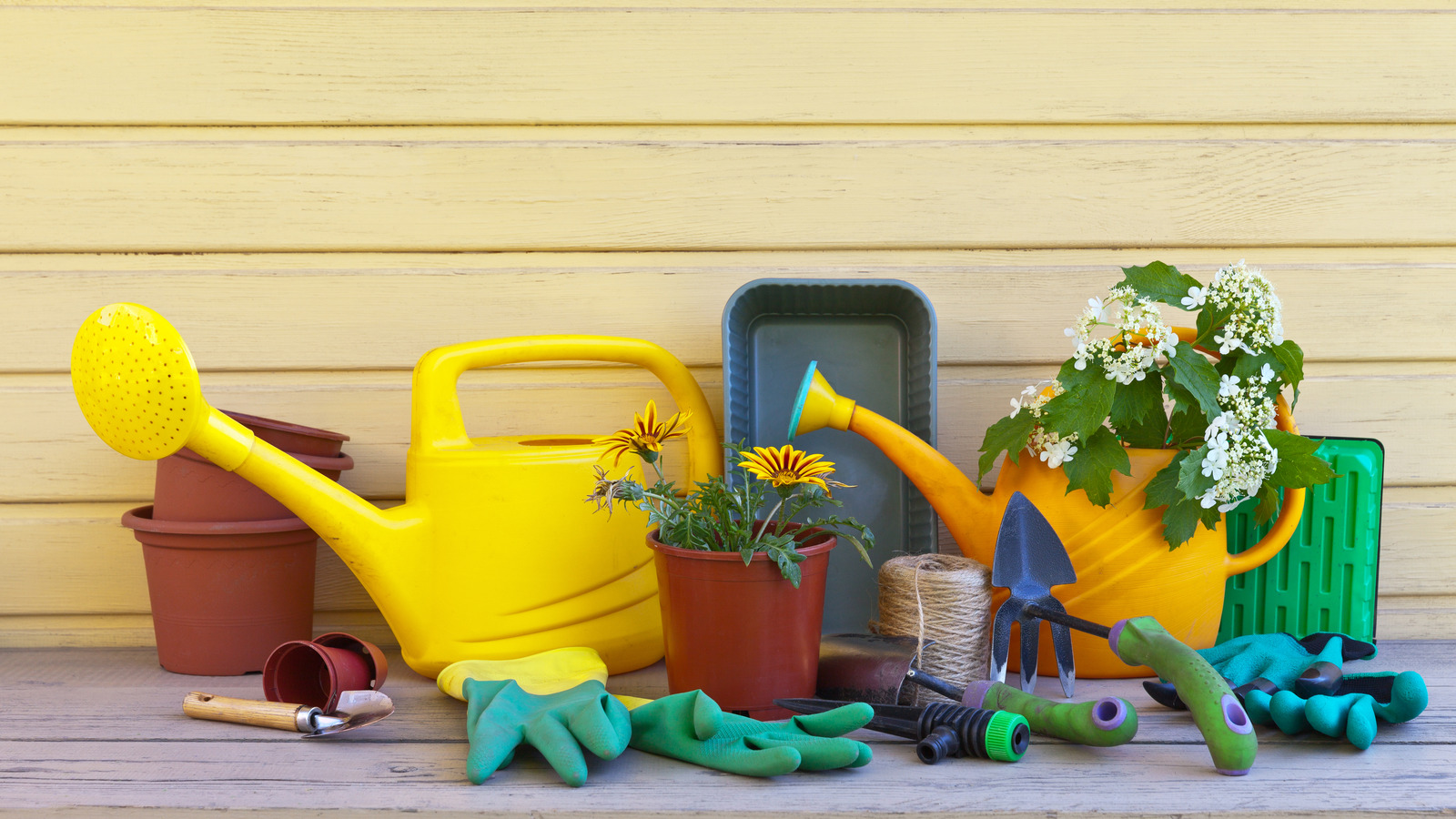Vertical gardens are famous for adding greenery and beauty to limited spaces. However, proper watering techniques are crucial for the health and vitality of plants in these unique setups. This article will explore the top watering techniques that will help you master vertical garden maintenance and ensure the optimal growth of your plants.
Pro Tip: When it comes to mastering vertical garden watering techniques, timing and consistency are key. I prefer healthy and thriving plants, water my vertical garden early in the morning or late in the evening when temperatures are cooler, reducing evaporation and allowing the plants to absorb moisture effectively. Be mindful not to overwater or underwater your plants; instead, aim for a balance by observing the moisture level of the soil.
Understanding the Watering Needs of Vertical Gardens
Water is essential for the growth and survival of plants. In vertical gardens, understanding their watering requirements becomes even more critical. Try to make vertical gardens creative. Factors such as plant species, sunlight exposure, temperature, and soil composition influence the watering needs of vertical gardens. Signs of overwatering, like yellowing leaves and root rot, or underwatering, like wilting and stunted growth, should be monitored to ensure the proper watering regimen.
Top Tips for Watering Vertical Gardens
1. Establishing a Watering Routine
Consistency is key when watering vertical gardens. Develop a regular watering schedule based on the specific needs of your plants and stick to it and make it attractive through flavorful vertical herbs.
2. Using the Right Watering Tools
Choose watering tools that allow you to deliver water directly to the root zone of the plants, such as a watering can with a drip irrigation system.
3. Watering at the Appropriate Time
Water your vertical garden before in the morning or late in the evening to minimize evaporation and give plants ample time to absorb moisture.
4. Applying Water Directly to the Root Zone
Focus your watering efforts on the root area to ensure the plants receive sufficient moisture for optimal growth.
5. Monitoring Moisture Levels
Regularly check the soil moisture levels using a meter or insert your finger into the soil. Water only when the soil is dry to a certain depth, as different plants have different moisture requirements. Show creativity with regular maintenance and DIY ideas.
Water Conservation Techniques for Vertical Gardens
1. Implementing Drip Irrigation Systems
Drip irrigation efficiently delivers water directly to the root zone, minimizing water wastage through evaporation or runoff.
2. Collecting and Reusing Rainwater
Install rain barrels or collect rainwater using a water collection system to reduce reliance on freshwater sources and save water.
3. Mulching to Reduce Evaporation
Apply a layer of mulch on the soil surface to help retain moisture, prevent weed growth, and reduce evaporation.
4. Watering During Cooler Periods
Water your vertical garden during cooler parts of the day or periods of lower evaporation to ensure water absorption and reduce water loss.
Troubleshooting Common Watering Issues in Vertical Gardens
1. Drainage Problems
Ensure proper drainage in your vertical garden by using well-draining soil and providing adequate drainage outlets to prevent waterlogging.
2. Nutrient Leaching
Overwatering can lead to nutrient leaching from the soil. Consider using slow-release fertilizers or organic compost to replenish essential nutrients.
3. Dealing with Excess Water Runoff
If excess water runoff is an issue, consider adding water catchment systems or adjusting the watering schedule for proper absorption.
4. Preventing Fungal Diseases
To prevent fungal diseases caused by overwatering, ensure good airflow, avoid watering foliage, and water in the morning to allow plants to dry out during the day.
Frequently Asked Question
Q. How often should I water my master vertical garden?
The watering frequency depends on various factors, such as the plant types, weather conditions, and the specific needs of your vertical garden. Generally, vertical gardens require more frequent watering compared to traditional gardens. As a starting point, check the moisture levels in the soil and water when it feels dry to the touch.
Q. What is the best time to water a master vertical garden?
Watering your vertical garden early or late afternoon is usually the best time. During these times, the temperature is cooler, and evaporation is less likely. Avoid watering during the hottest day to prevent excessive water loss.
Q. Can I use an automated irrigation system for my master vertical garden?
Yes, an automated irrigation system can be beneficial for maintaining a consistent watering schedule. Drip irrigation systems or micro-sprinklers are commonly used in vertical gardens. They provide a controlled and efficient way of delivering water directly to the plant's root zones.
Q. How much water should I use for my master vertical garden?
The water requirements can vary depending on the plants in your vertical garden and the environmental conditions. It's important to avoid overwatering as it can lead to root rot and various plant health cases. Ensure the water penetrates the soil adequately but doesn't create waterlogged conditions. Adjust the amount of water based on your plant's specific needs and the growing medium's moisture retention capacity.
Q. How can I check if my master vertical garden needs watering?
Feeling the soil or growing medium is one way to check if your vertical garden needs watering. Insert your finger about one inch deep into the soil; it's time to water if it feels dry. Additionally, you can use moisture sensors or install a soil moisture meter to get more accurate readings.
Q. Can I use a foliar spray for watering my master vertical garden?
While foliar sprays can provide supplemental nutrients or pest control, they should not be the primary method of watering your vertical garden. It's important to water at the root level to ensure proper hydration and nutrient absorption by the plants.
Conclusion
Mastering vertical garden watering techniques is essential for maintaining healthy and vibrant plants. By understanding the watering needs of your vertical garden, implementing proper watering routines, conserving water, and troubleshooting common issues, you can ensure the long-term success of your vertical garden and enjoy its beauty year-round.





